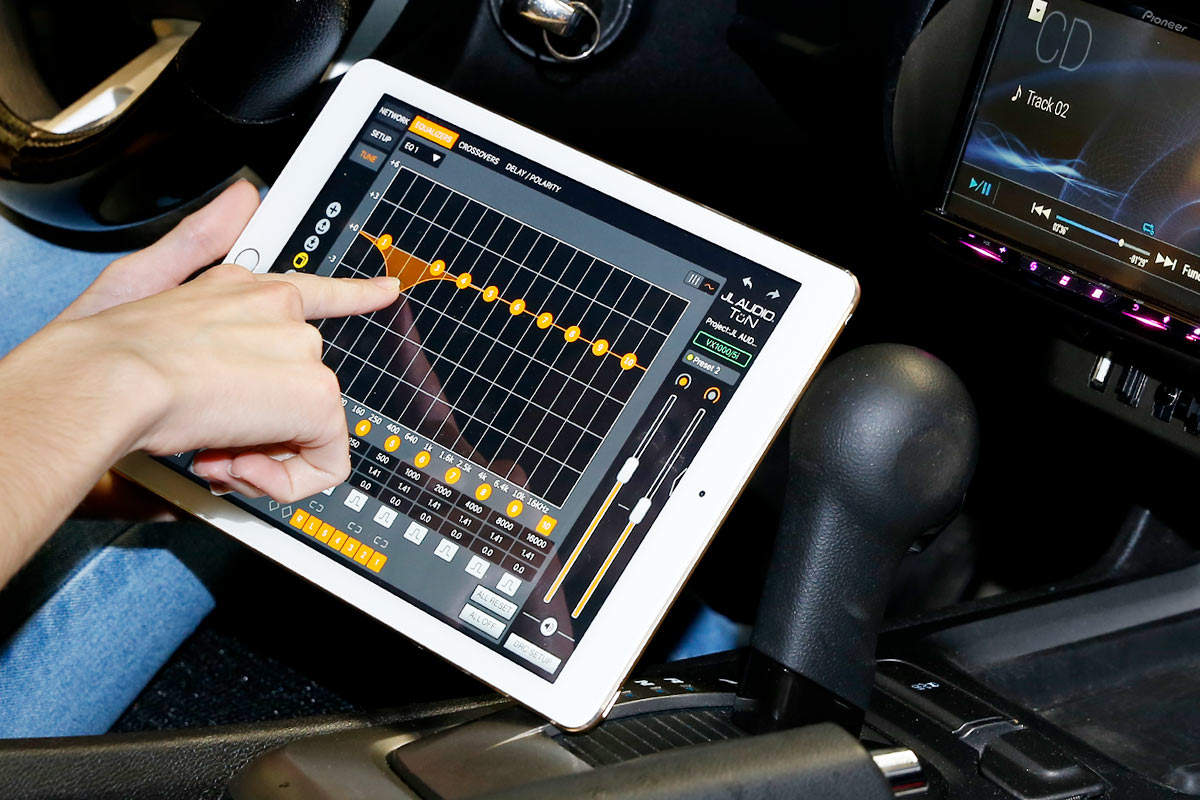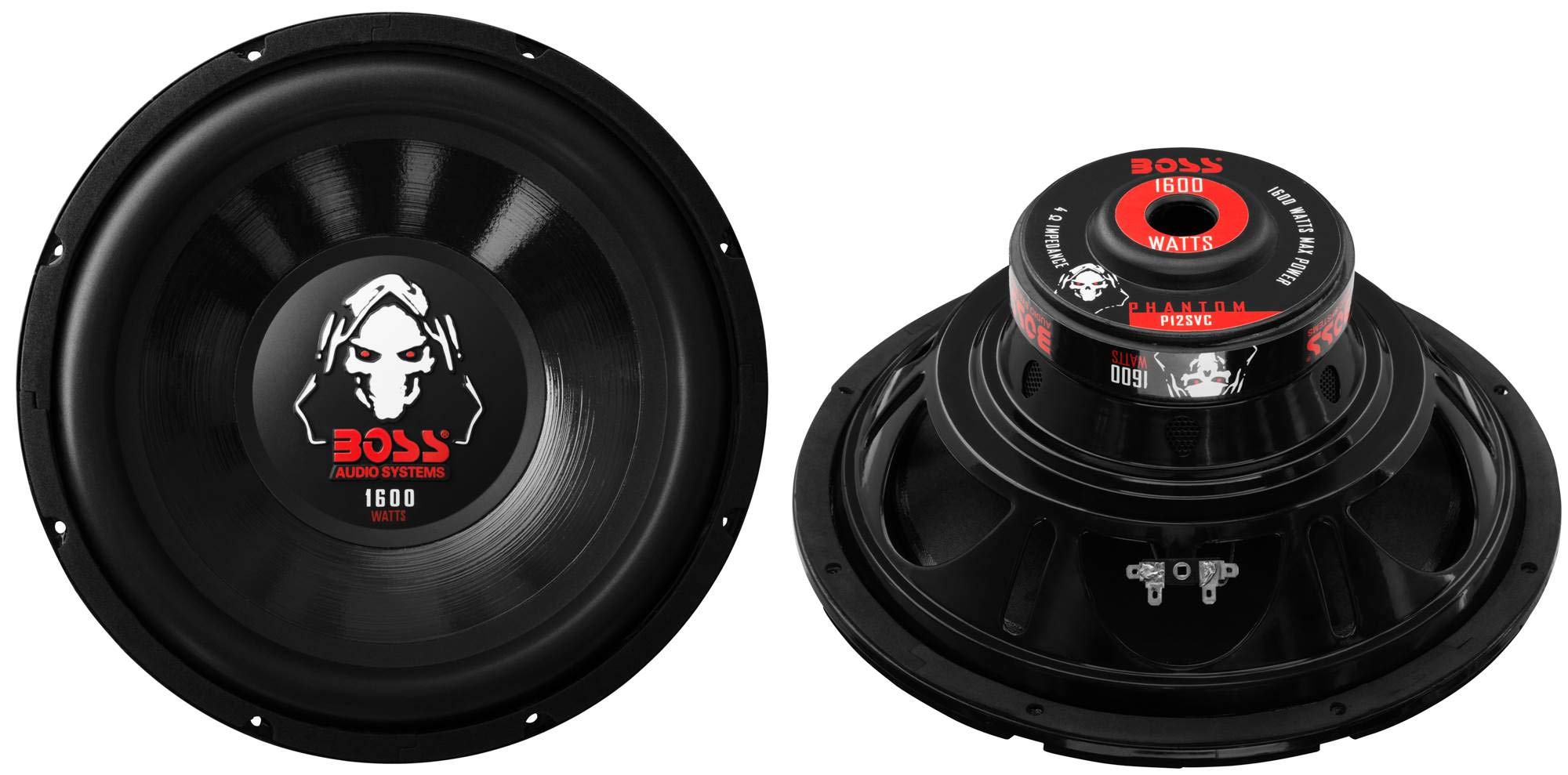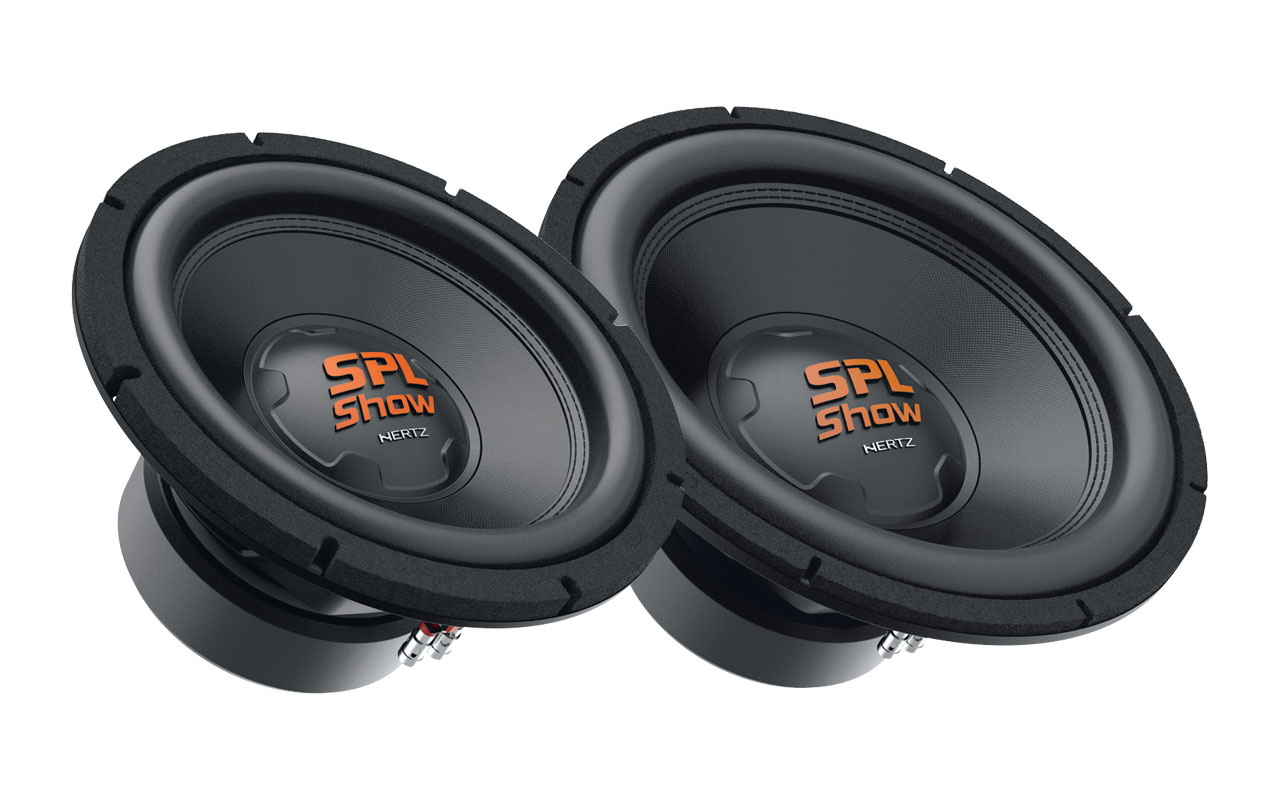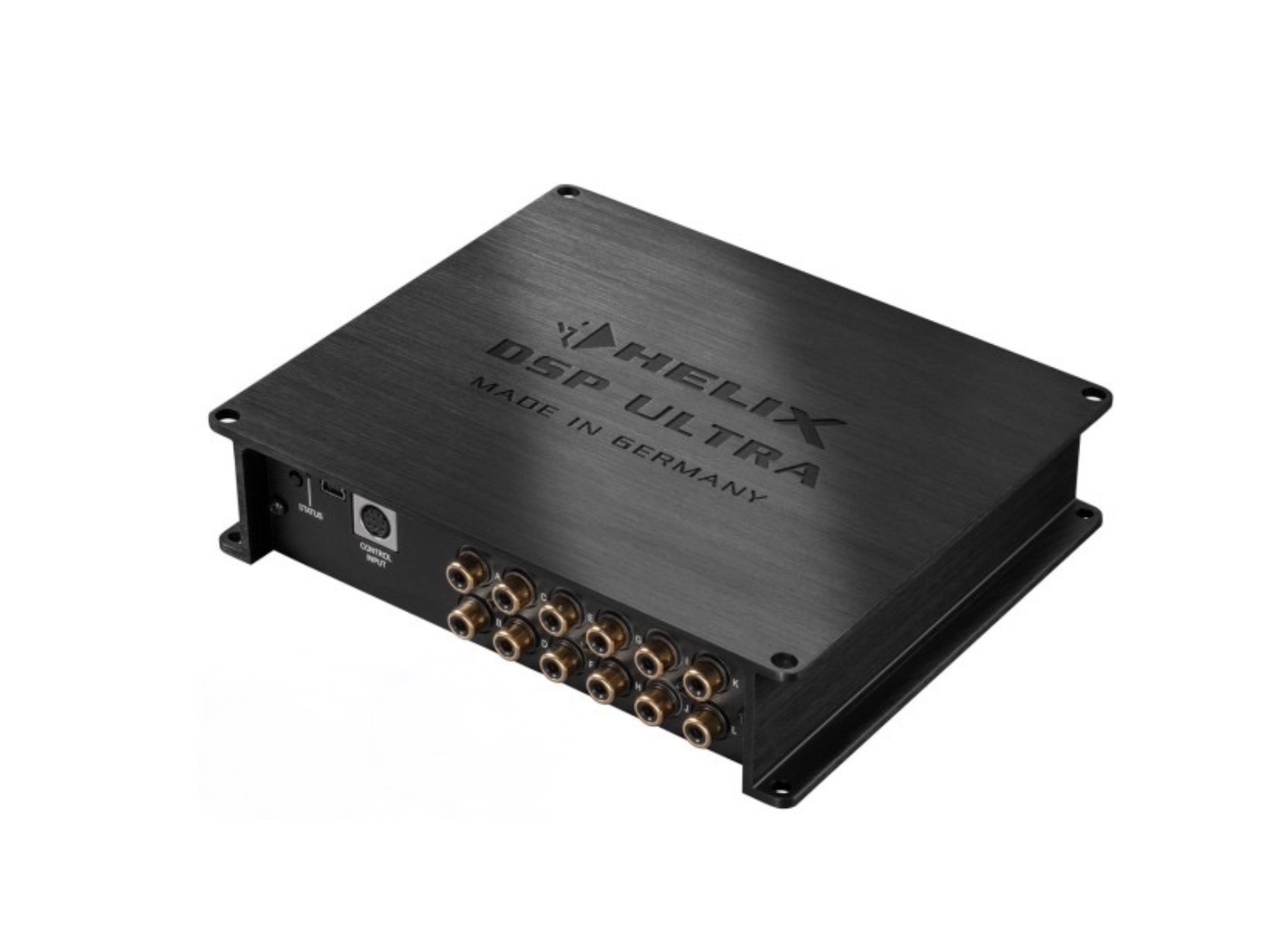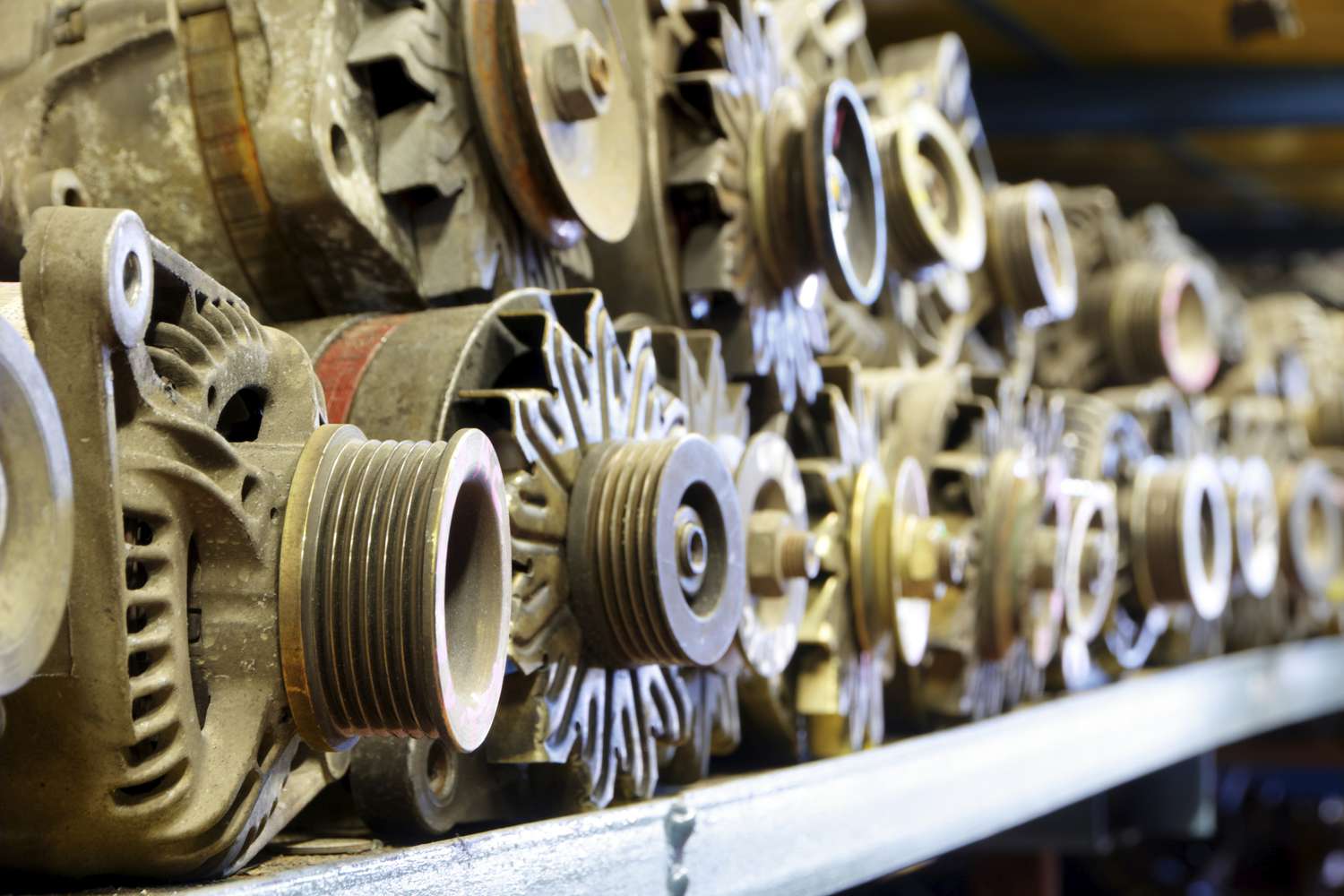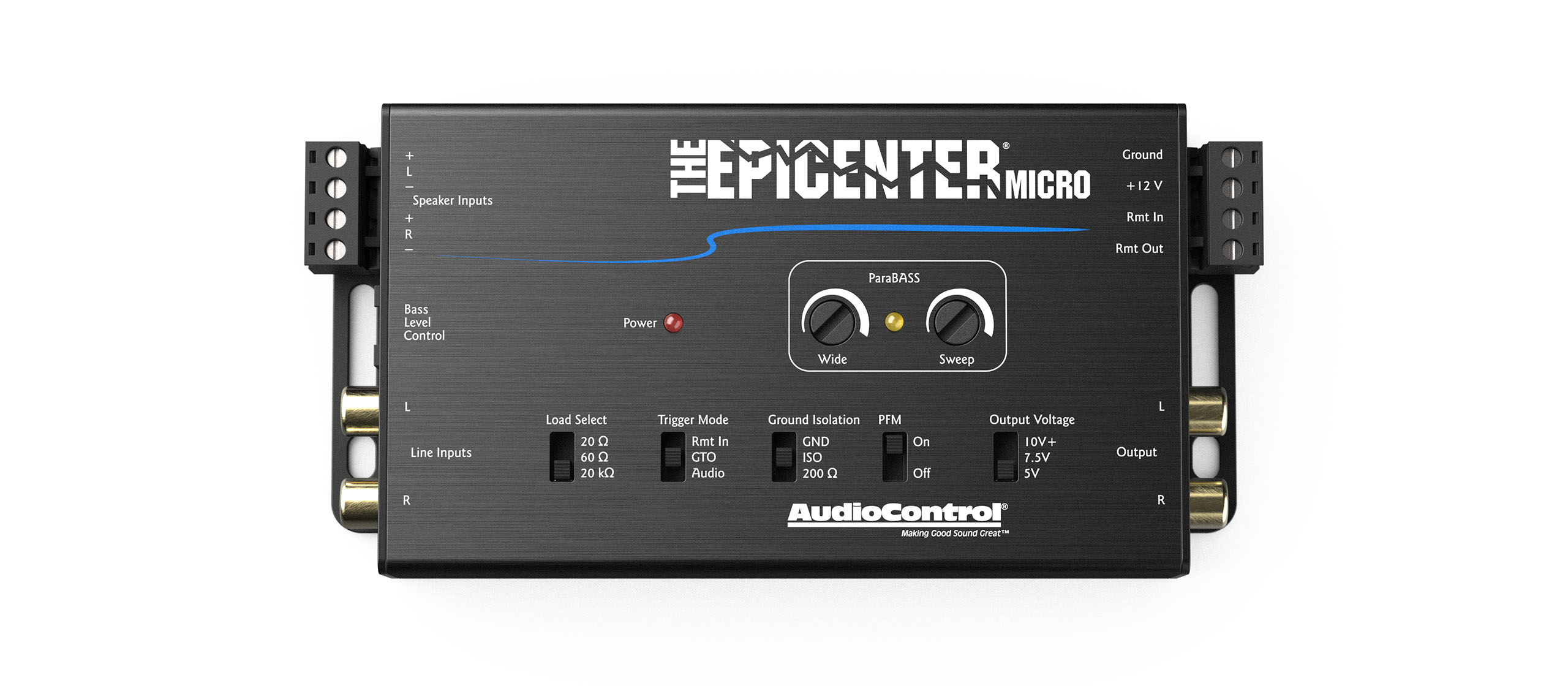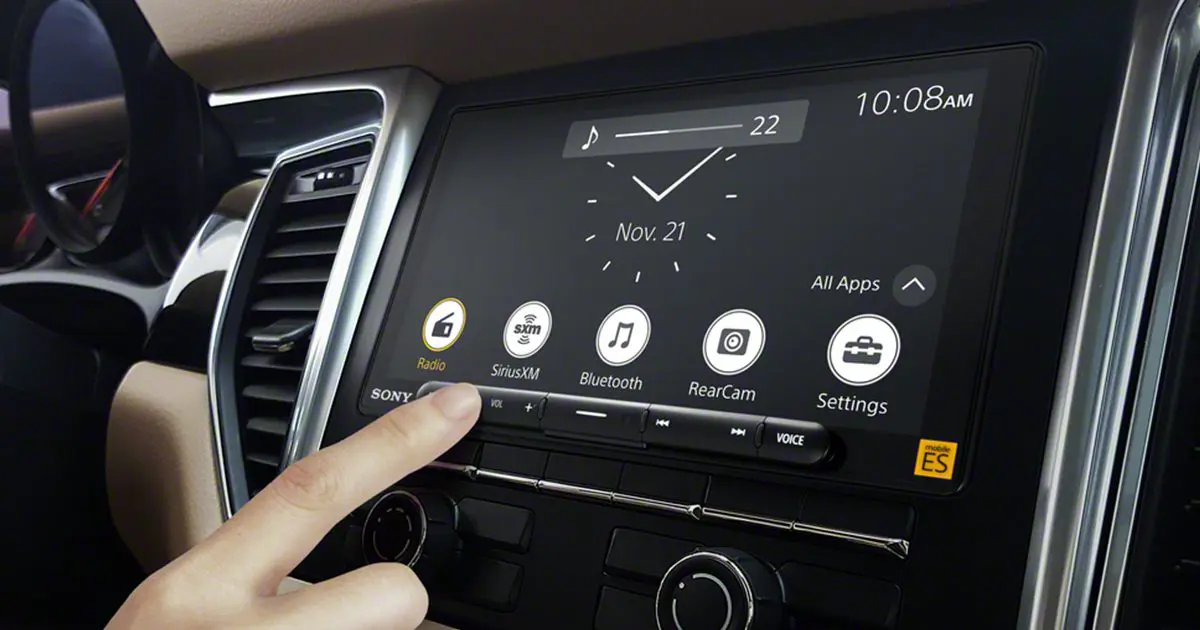Home>Devices & Equipment>Car Audio>What Does An Equalizer Do For Car Audio?
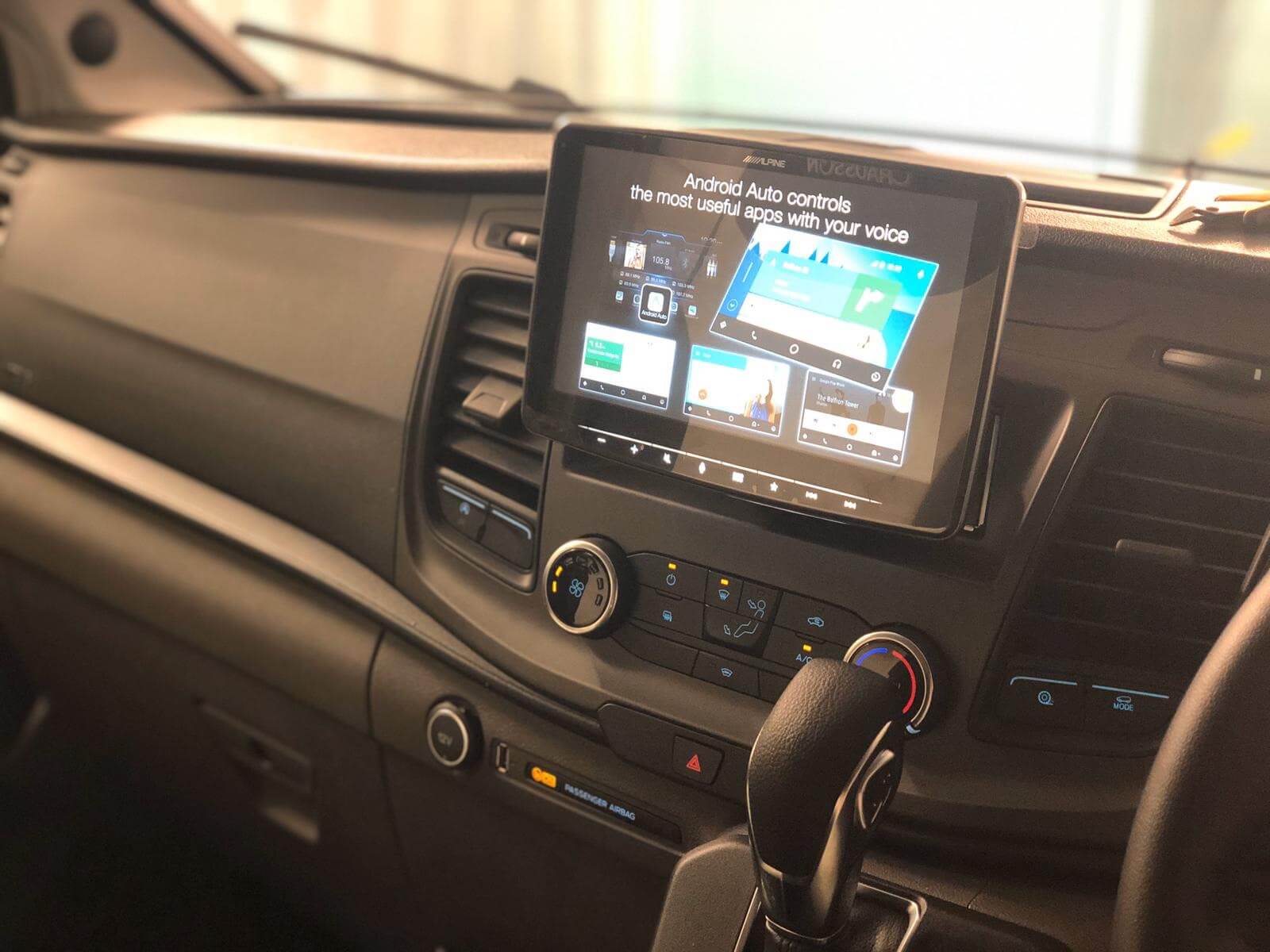

Car Audio
What Does An Equalizer Do For Car Audio?
Modified: January 22, 2024
Discover the importance of an equalizer in car audio systems and how it enhances the sound quality. Find out how a car audio equalizer can optimize your listening experience.
(Many of the links in this article redirect to a specific reviewed product. Your purchase of these products through affiliate links helps to generate commission for AudioLover.com, at no extra cost. Learn more)
Table of Contents
Introduction
When it comes to car audio, one crucial component that often gets overlooked is the equalizer. An equalizer plays a significant role in shaping the sound and ensuring a satisfying audio experience while on the road. It allows you to adjust the tonal balance by selectively boosting or cutting specific frequencies, enhancing the quality and clarity of your music.
In essence, an equalizer acts as a control panel for your car audio system, allowing you to fine-tune the sound to your preferences. Whether you’re an audiophile seeking the perfect audio reproduction or simply someone who wants to enhance their car’s entertainment system, understanding what an equalizer does and how to use it can make a world of difference.
While the technology behind equalizers may seem complex, the concept is relatively straightforward. Think of it as a musical instrument’s tone control, but instead of adjusting the treble or bass on a guitar or piano, an equalizer adjusts the levels of different frequencies in your car audio system.
The purpose of an equalizer is to compensate for any disparities in the audio signal caused by factors such as the car’s acoustics, speaker placement, or audio file quality. It allows you to tweak the sound to match your personal tastes and overcome any limitations of your car’s audio system.
Whether you enjoy blasting energetic beats or savoring the delicate nuances of classical music, an equalizer empowers you to optimize the sound for your specific preferences, maximizing your enjoyment on every drive.
Now that we have a basic understanding of what an equalizer is and why it’s important, let’s delve deeper into its functions and capabilities, exploring the various frequency bands and different types of equalizers available. By the end of this article, you’ll have a comprehensive understanding of how to leverage the power of an equalizer to elevate your car audio experience to new heights.
Basic Function of an Equalizer
The primary function of an equalizer is to adjust the frequency response of your car audio system. Each song or audio track is composed of different frequencies – the low, mid, and high tones that make up the overall sound. An equalizer allows you to control these frequencies, enabling you to shape the audio to your liking.
By adjusting the volume level of specific frequency bands, an equalizer can emphasize or attenuate certain parts of the music. This control over the frequencies provides opportunities to enhance the clarity, detail, and overall balance of the sound, bringing out the best in your car audio system.
The most common equalizer controls include bass, midrange, and treble, which correspond to the low, mid, and high-frequency ranges, respectively. By adjusting these controls, you can boost or reduce specific frequency ranges to optimize the sound quality according to your preferences.
For instance, if you enjoy bass-heavy music genres like hip-hop or EDM, you might want to boost the bass frequencies to enhance the deep, thumping beats. On the other hand, if you listen to intricate classical music, you may want to emphasize the midrange frequencies to highlight the delicate nuances of the instruments and vocals.
An equalizer also allows you to correct any audio imbalances that may arise due to the limitations of your car’s audio system or environmental factors. For example, if your car’s speakers tend to produce excessive treble, you can use the equalizer to reduce the higher frequencies and achieve a more balanced sound.
Furthermore, equalizers are particularly useful in compensating for the acoustic properties of your car’s interior. The materials used in the car’s construction, the shape of the interior, and the position of the speakers can all affect the sound quality. With an equalizer, you can adjust the frequency response to counteract any unwanted resonances or reflections, ultimately improving the audio performance in your car.
In summary, the basic function of an equalizer is to provide control over the frequency response of your car audio system. By adjusting the volume levels of different frequency bands, you can shape the sound according to your preferences, compensate for audio imbalances, and optimize the audio quality based on the acoustics of your car’s interior.
Frequency Bands and Adjustment
Understanding the different frequency bands and how they contribute to the overall audio experience is crucial when using an equalizer. Each frequency band represents a specific range of tones, and manipulating these bands allows you to tailor the sound to your liking.
Typically, equalizers have three main frequency bands: bass, midrange, and treble. Let’s explore each of these bands and their characteristics:
- Bass: The bass frequency range occupies the lower end of the sound spectrum, ranging from around 20Hz to 250Hz. It is responsible for the deep, low-end tones that give music its richness and impact. Adjusting the bass control allows you to enhance or reduce the prominence of these low frequencies, giving you more control over the thump and rumble of the music.
- Midrange: The midrange frequencies cover the range of approximately 250Hz to 4kHz. This is where the majority of vocals, instruments, and many melodic elements in the music reside. By manipulating the midrange control, you can bring out the clarity and presence of vocals and instruments, making them more pronounced or blending them seamlessly into the mix. Adjusting the midrange frequencies can have a significant impact on the overall balance and intelligibility of the sound.
- Treble: The treble frequency range spans from about 4kHz to 20kHz. It encompasses the higher frequencies that add sparkle, detail, and airiness to the music. Adjusting the treble control enables you to adjust the crispness and brightness of the sound. It can help enhance the clarity of cymbals, the shimmer of high-pitched instruments, and the overall definition of the music.
When using an equalizer, you may see sliders, knobs, or digital controls that allow you to adjust the volume levels of these frequency bands. Depending on the equalizer, the controls may be labeled with specific frequency values or given general terms like “bass,” “mid,” and “treble.”
When adjusting these controls, it’s important to strike a balance and utilize your ears to guide you. Experiment with the settings to find the sweet spot that suits your preferences and the characteristics of the music you’re listening to. It’s worth noting that drastic adjustments can sometimes negatively impact the overall sound quality, so small, subtle changes are often recommended.
By understanding the different frequency bands and their adjustments, you can fine-tune the audio and create a personalized listening experience tailored to your liking. Whether you want more punchy bass, clearer vocals, or sparkling highs, an equalizer allows you to adjust these frequencies and bring out the best in your music.
Equalizer Types: Parametric vs. Graphic
When it comes to equalizers, there are two main types commonly used in car audio systems: parametric and graphic equalizers. Each type has its own unique characteristics and advantages, offering different levels of control over the audio signal.
1. Parametric Equalizer: A parametric equalizer provides a high level of flexibility and precision when it comes to adjusting the audio frequencies. It typically offers control over multiple parameters, including center frequency, bandwidth (Q), and gain. This allows you to target specific frequencies with surgical precision and fine-tune the sound to your liking.
With a parametric equalizer, you can select a specific frequency range, adjust the width of that range (bandwidth), and boost or cut the volume level of that range. This level of control is particularly useful when you need to fix specific audio issues or emphasize certain elements of the music.
For example, if you notice a resonant frequency causing a boomy bass in your car, a parametric equalizer can help you identify the specific frequency and narrow down the adjustment to only that range. This precision allows for more accurate correction and optimization of the audio.
2. Graphic Equalizer: A graphic equalizer, on the other hand, provides a more visual and intuitive way of adjusting the audio frequencies. It consists of a set of predetermined frequency bands, usually ranging from 5 to 12 bands, displayed as sliders on the equalizer panel.
With a graphic equalizer, you can adjust the volume level of each frequency band by sliding the corresponding slider up or down. This type of equalizer offers a simpler and more straightforward approach to adjusting the sound, making it easier for beginners to get started.
Graphic equalizers are often designed with specific preset EQ curves or profiles to cater to different music genres or audio preferences. This allows users to quickly choose a pre-configured setting that best suits their listening needs without having to manually adjust each frequency individually.
Both parametric and graphic equalizers have their own advantages and are suitable for different audio applications. Parametric equalizers excel in situations where precise adjustments and problem-solving are required, while graphic equalizers provide a convenient and user-friendly way to shape the sound to personal tastes.
It’s important to note that many car audio systems feature a combination of both types, allowing users to leverage the benefits of each. This gives you the flexibility to make subtle adjustments and tackle specific issues with a parametric equalizer while also enjoying the convenience of preset EQ curves provided by a graphic equalizer.
By understanding the differences between parametric and graphic equalizers, you can choose the type that best suits your needs and preferences, enabling you to fine-tune your car audio system with precision and ease.
Benefits of Using an Equalizer in Car Audio
The benefits of using an equalizer in car audio systems are manifold. By providing control over the frequency response and allowing you to shape the sound according to your preferences, an equalizer enhances the overall audio experience in several ways. Let’s explore some of the key advantages:
- Customized Sound: One of the major benefits of using an equalizer is the ability to customize the sound to your personal tastes. Whether you prefer boosted bass, emphasized vocals, or a balanced overall sound, an equalizer allows you to adjust the frequencies and achieve the desired audio signature.
- Improved Clarity and Detail: With an equalizer, you can enhance the clarity and detail of the audio. By adjusting the different frequency bands, you can bring out the finer nuances of the music, making instruments and vocals more distinct and enhancing the overall listening experience.
- Optimized Audio for Different Music Genres: Different music genres have different characteristics and require specific audio adjustments. An equalizer allows you to tailor the sound to match the genre you’re listening to. You can boost the bass for hip-hop, emphasize the midrange for rock, or enhance the treble for classical music. This optimization ensures that you get the best possible audio quality for every genre.
- Compensation for Acoustic Limitations: Every vehicle has its unique acoustic properties that can impact the sound reproduction. An equalizer can compensate for these limitations and improve the audio quality in your car. It can help overcome issues caused by interior cabin resonance, speaker placement, or other environmental factors, ensuring a balanced and immersive listening experience.
- Correct Audio Imbalances: In some situations, audio imbalances may occur due to factors like speaker quality, audio source, or vehicle settings. An equalizer provides the means to address these imbalances by adjusting specific frequency bands. For example, if you have a car audio system with overly pronounced treble, you can use the equalizer to reduce the higher frequencies and achieve a more balanced sound.
- Enhanced Bass Response: A well-tuned equalizer can significantly improve the bass response in your car audio system. By adjusting the bass frequencies, you can achieve deep, impactful bass that adds richness and depth to your music. This is especially important for those who enjoy genres like hip-hop, EDM, or any music with a strong emphasis on bass.
By utilizing an equalizer in your car audio system, you can fine-tune the sound to your unique preferences and overcome any limitations posed by your vehicle’s acoustics. Whether you’re aiming for a more immersive experience, crystal-clear vocals, or the perfect balance of bass and treble, an equalizer empowers you to take control and elevate your car audio quality to new heights.
Setting Up and Adjusting Your Car Audio Equalizer
Setting up and adjusting your car audio equalizer may seem daunting at first, but with a few simple steps, you can optimize the sound to your preferences and enhance your listening experience. Here are some tips to help you get started:
- Understand the Controls: Familiarize yourself with the controls of your car audio equalizer. Whether it’s sliders, knobs, or digital controls, understanding how they work and what frequencies they adjust is essential.
- Start with Flat Settings: Begin by setting all the equalizer controls to their neutral or flat positions. This ensures that you start with a balanced sound and allows you to make adjustments accordingly.
- Experiment with Music: Play a variety of songs that represent different genres and styles of music. This will help you understand how different frequencies affect different types of music and allow you to make more precise adjustments.
- Adjust the Bass Frequencies: Start by adjusting the bass frequencies to your liking. If you prefer a stronger bass response, gradually increase the bass control. If the bass becomes overwhelming or boomy, dial it back slightly.
- Tweak the Midrange Frequencies: Next, focus on the midrange frequencies. Experiment with different settings to find the sweet spot that brings out clear vocals and instruments. Be careful not to go overboard with the adjustments, as it may result in an unnatural sound.
- Fine-tune the Treble Frequencies: Finally, adjust the treble frequencies to add sparkle and detail to the sound. Be mindful of not making it too bright or harsh. Aim for a balanced and natural treble response that complements the overall sound.
- Listen and Refine: After making adjustments, listen to various songs and pay attention to the improvements and any potential issues. If something doesn’t sound right, make small adjustments until you achieve the desired sound quality.
- Consider Presets or Custom Profiles: Many car audio systems come with preset equalizer profiles designed for specific music genres or audio preferences. Alternatively, you can create your own custom profiles based on your favorite settings for different music genres.
- Take Environmental Factors into Account: Keep in mind that the acoustics of your car’s interior can greatly impact the sound quality. Consider factors such as road noise, window positions, and materials used in the car’s construction, and make adjustments accordingly to compensate for any audio discrepancies.
Remember, adjusting an equalizer is subjective, and the optimal settings will vary depending on personal preferences, the car’s audio system, and the acoustics of the environment. Take your time to experiment, listen carefully, and make incremental adjustments to achieve the best sound quality in your car audio system.
Tips for Getting the Best Sound from Your Car Audio Equalizer
To get the best sound from your car audio equalizer and optimize your listening experience, consider the following tips:
- Start with Quality Source Material: Begin with high-quality audio files or streaming services that offer high bitrate and lossless formats. Starting with good source material ensures that your equalizer adjustments have the best foundation for optimal sound reproduction.
- Make Incremental Adjustments: When adjusting the equalizer, make small, incremental changes rather than drastic ones. This will help maintain a balanced sound and prevent overemphasis or distortion of certain frequencies.
- Listen to Reference Tracks: Have a few reference tracks in various genres that you are familiar with. Use these tracks as a gauge to fine-tune your equalizer settings and ensure consistency across different types of music.
- Consider Room Correction: Some car audio systems or aftermarket equalizers offer room correction functions. These features analyze the car’s interior acoustics and automatically adjust the equalizer settings to compensate for any audio anomalies. Take advantage of these features for improved sound quality.
- Beware of Excessive Boosts: While it may be tempting to crank up the bass or treble to extreme levels, be cautious of excessive boosts. Extreme adjustments can lead to distortion, speaker damage, or an unnatural sound. Keep your adjustments within reasonable limits for a balanced and pleasing audio experience.
- Consider Time Alignment: If your car audio system supports it, utilize time alignment settings to ensure that the sound from each speaker reaches your ears at the same time. This helps create a more realistic and immersive soundstage, enhancing the overall listening experience.
- Take Care of Speaker Placement: Proper speaker placement can greatly impact the sound quality. Ensure that speakers are installed in optimum locations and angled correctly for better imaging and sound dispersion. Consider consulting a professional installer for expert advice if needed.
- Avoid Over Processing: Overusing equalizer settings, sound effects, or audio enhancements can result in a muddled or artificial sound. Keep the adjustments minimal and focus on achieving a natural and well-balanced sound.
- Regularly Calibrate and Revisit Settings: As the car’s interior and audio components age, the sound characteristics may change. It’s a good practice to periodically calibrate and revisit your equalizer settings to adapt to any changes and ensure optimum sound quality.
- Trust Your Ears: Ultimately, trust your ears when making adjustments. While technical guidelines can be helpful, personal preference and subjective listening experience play a crucial role. If it sounds good to you, that’s what matters most.
By following these tips and considering the unique characteristics of your car audio system, you can maximize the performance of your equalizer and enjoy the best possible sound quality while on the road.
Conclusion
An equalizer is a powerful tool that allows you to shape and optimize the sound in your car audio system. By adjusting the frequency response and controlling different frequency bands, you can customize the sound to your preferences and overcome any limitations posed by your car’s acoustics or audio system.
Whether you’re seeking a deeper bass impact, clearer vocals, or a well-balanced audio experience, an equalizer empowers you to fine-tune the sound to your liking. With control over the bass, midrange, and treble frequencies, you can enhance the audio quality and create a more enjoyable and immersive listening experience.
Understanding the basic function of an equalizer, the different frequency bands, and the various types of equalizers available (such as parametric and graphic) is essential for making informed adjustments. By starting with neutral settings, experimenting with different music genres, and making incremental changes, you can achieve the desired sound signature in your car audio system.
Keep in mind that the optimal equalizer settings may vary depending on personal preferences, the audio source, and the specific acoustic characteristics of your car’s interior. Regularly revisiting your settings, considering room correction features if available, and calibrating as needed can help maintain optimal sound quality as the car and its audio components age.
Remember, the key to using an equalizer effectively is to trust your ears and focus on achieving a balanced and natural sound that brings out the best in your music.
So, take the time to explore the capabilities of your car audio equalizer and enjoy the freedom to shape and optimize your audio experience to suit your unique preferences. With the right adjustments, you’ll be able to enjoy every drive with your favorite tunes sounding better than ever.

